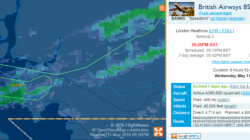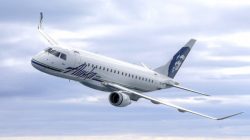I read on Chris McGinnis’s blog Travel Skills that there was a successful emergency landing of a Cirrus SR-22 single-engine aircraft after the plane ran out of fuel over the Pacific Ocean and ejected its parachute. The pilot was ferrying the aircraft from Tracy, California, to the island of Maui and notice a few hours in that there wouldn’t be enough fuel to complete the trip.
The key reason this story is so popular is that the Coast Guard was alerted in advance and has video footage of the event.
My dad is a private pilot who owns a small plane (though not a Cirrus), so I asked him for his opinion:
These are very long flights, close to twenty hours. Usually passenger seats are removed and replaced (temporarily) with fuel tanks. Safety gear adds more weight. The planes are overweight at departure and require special arrangements to fly. The pilots who do this are special people and they fly alone to minimize risk and weight.
Weather is a big variable. A slight (10 knot) headwind can extend a flight by a couple of hours and require an extra 30 gallons (200 pounds) of fuel. That’s like an extra person in a plane that is already overloaded and usually carries only 4 people. Planning depends a lot on forecast weather and especially wind. Planes and pilots will wait on the ground for weeks until the weather forecast is favorable. When I was in Santa Maria last fall, there was a plane sitting on the ramp waiting for a chance to fly. I could tell because it had big fuel tanks in the cabin instead of seats. Since two planes didn’t make it that day, I’d guess the forecast was favorable but the actual winds were unfavorable.
Note that at least the SR22 pilot was able to get a life raft out the door and get himself into it. That alone is quite a feat. I haven’t read details on the other plane.
My dad said that two planes failed to reach their destination on Sunday. I hadn’t heard about that, and most news stories only focus on the one with the parachute. I did, however, find a reference to the other in an Associated Press article. Apparently it went down near Oahu and had four passengers onboard, suggesting it was not being ferried from the mainland.
Tracy is a bit inland, but it’s not a bad place to begin the trip as it’s only 2,388 miles from Kahului vs. 2,386 miles if you started in Santa Maria. Compare that to 2,541 miles from San Diego. And remember these planes are not as fast as your fancy Boeing 737-900 you take on vacation. The pilot had flown over 14 hours before evacuating.
I’m still impressed by the successful parachute landing, though Flying magazine reports 54 successful uses. Forward motion generates lift over the wings, and even when an engine stops on an airplane you can continue to move forward as you fall — it’s called gliding. It’s not much different from flying under power except that climbing is impossible for all but ultralight aircraft.
You lose a lot of that control when the parachute is ejected. In this case, the pilot and the Coast Guard had a lot of advance notice so they probably had time to plan a successful strategy after reaching a designated rescue point and reducing the aircraft speed near the ocean surface.





